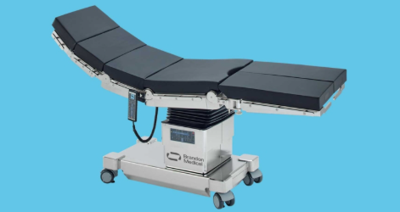
Precision is key in surgery; having the right equipment is crucial for successful outcomes. Surgical tables are one of the main essentials in the operating room. Such tables have evolved with time and now provide features for better functionality and patient safety. Learn more about what makes a modern surgical table outstanding.
Ergonomic Design
Surgeons depend on precise surgical tables for optimal positioning during procedures. Ergonomics is one of the central aspects of modern surgical tables. Its design combines comfort for patients and ease of use for medical personnel. The height adjustment features help ensure the ideal posture for surgeons, minimizing fatigue during long work hours. Finally, lateral tilt options provide accurate positioning, with adjustable tilt for different surgical requirements.
Advanced Imaging Compatibility
Most new surgical tables work right with an imager. This integration for real-time imaging is essential for precise procedures. The tabletops of the surgical tables are generally radiolucent, meaning that X-rays can pass through them without obstruction. This feature enhances visualization, which helps surgeons make crucial decisions during operations.
Multi-Disciplinary Functionality
Modern surgical tables have become multipurpose, used in different healthcare specialties. They can adapt to various specifications, whether orthopedic, cardiovascular, or general surgery. Thanks to interchangeable modular parts, the table can be easily reconfigured for multiple procedures. Such flexibility eliminates the need for another table and saves space.
Enhanced Safety Features
Surgical settings emphasize safety. Newer tables have several built-in protective features for the patient and the staff. The stability provided by the locked movement prevents accidental contact during procedures. Weight sensors can detect patient movements and automatically modify them to maintain balance. All these features work to eliminate operational risks.
Intuitive Control Systems
Third, surgical table design is heavily dependent on usage. The equipment's special control system makes quick and straightforward control possible. Numerous tables have board touch or remote regulation, which allows for correct settings with minimal effort. The simplified process helps with workflow and contributes to increased efficiency in the OR.
Durability and Maintenance
Surgical tables are usually hefty investments, so they must be durable. With their quality materials and construction, they are made to withstand heavy-duty use. Surgical tables are often made from stainless steel and other durable materials that resist wear and corrosion. In addition, some simplified maintenance processes increase the durability of the equipment, ensuring reliability in the long term.
Patient Comfort and Support
The cutting table also prioritizes the patient's comfort. Newer designs add padding and support systems to improve comfort during procedures. Individual features like headrests, armboards, and leg supports can be adjusted to match the patient. Such emphasis on comfort can benefit patients, as it lowers anxiety and accelerates recovery time.
Mobility and Versatility
Mobility is a serious issue in modern surgery rooms. Most tables come with wheels, allowing easy transportation from one surgical suite to another. This mobility helps facilities with a shortage of space use their resources efficiently. Multifunctional designs enable tables to be used in different environments, from an operating theater to recovery.
Technological Integration
Integrating the technological suite into surgical tables is a more modern approach. Certain tables have connectivity with the hospital network and seamless data integration, which can enhance communication and coordination among medical teams. In addition, high-end models may have sensors and automated features that further enhance the functionality.
Surgical tables have evolved in the spirit of better surgical outcomes. They provide significant support for imaging compatibility and safety, in addition to their ergonomic design, which enhances the system's practical benefits related to its use in medical procedures. With the advancement of technology, surgical tables will add more innovative and functional features in the future to better serve healthcare.


(0) comments
We welcome your comments
Log In
Post a comment as Guest
Keep it Clean. Please avoid obscene, vulgar, lewd, racist or sexually-oriented language.
PLEASE TURN OFF YOUR CAPS LOCK.
Don't Threaten. Threats of harming another person will not be tolerated.
Be Truthful. Don't knowingly lie about anyone or anything.
Be Nice. No racism, sexism or any sort of -ism that is degrading to another person.
Be Proactive. Use the 'Report' link on each comment to let us know of abusive posts.
Share with Us. We'd love to hear eyewitness accounts, the history behind an article.